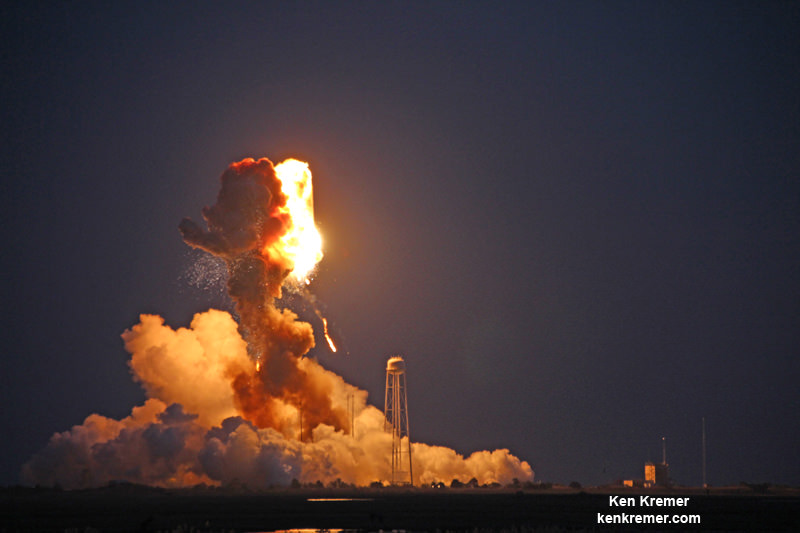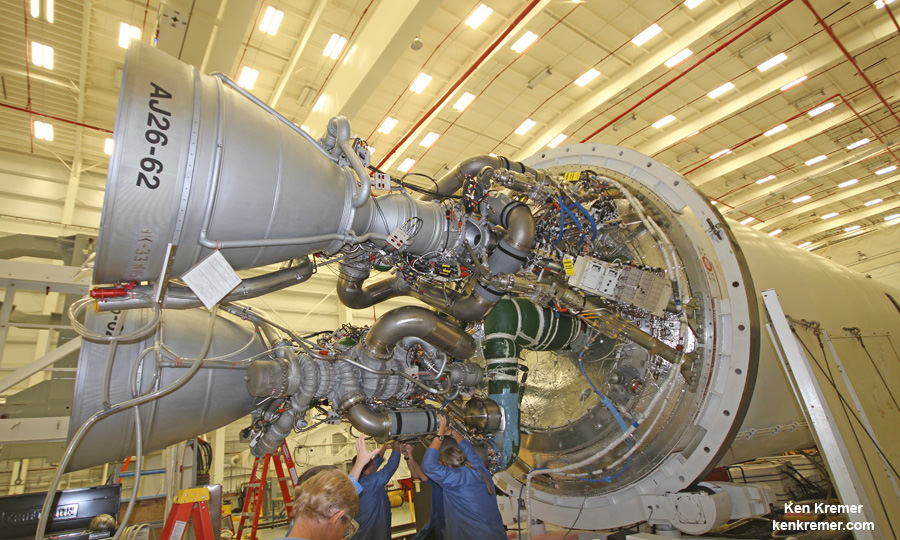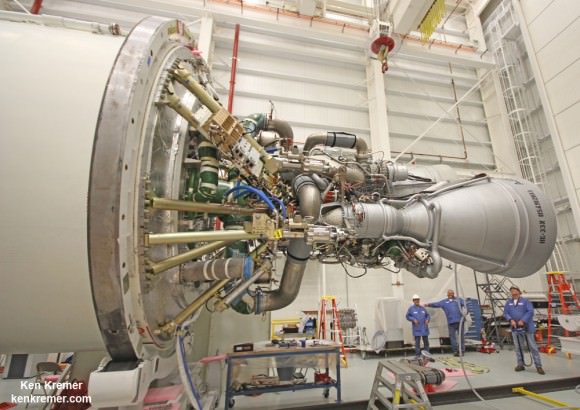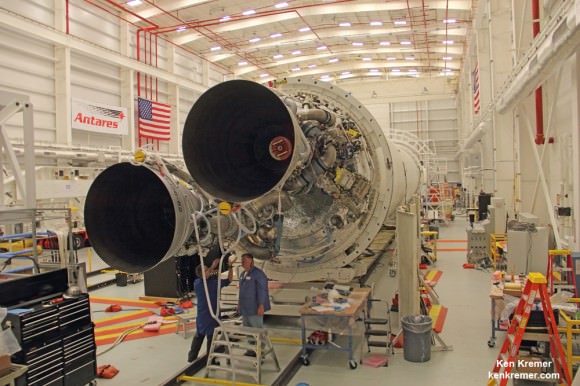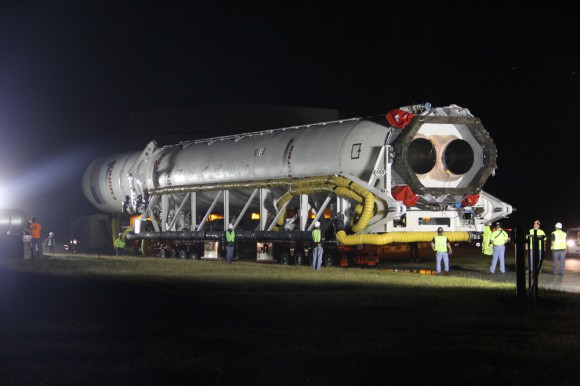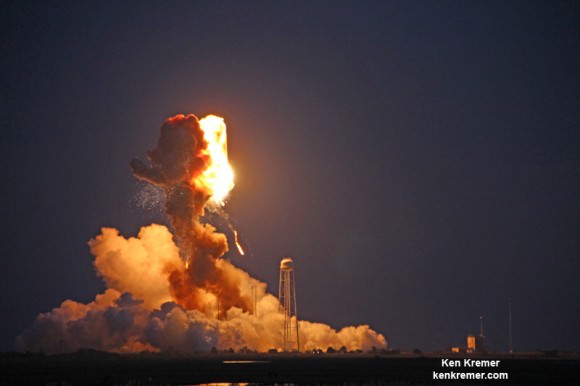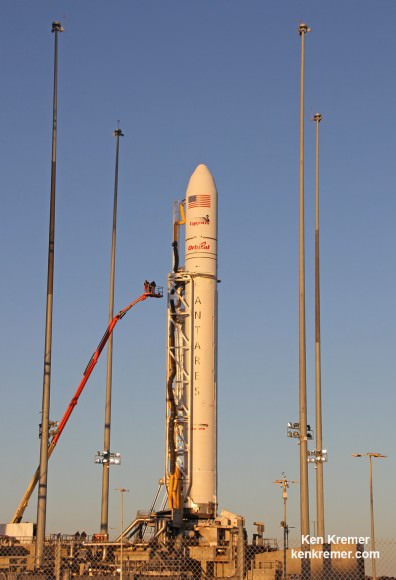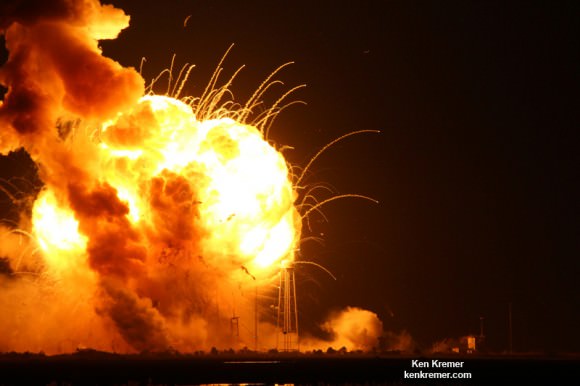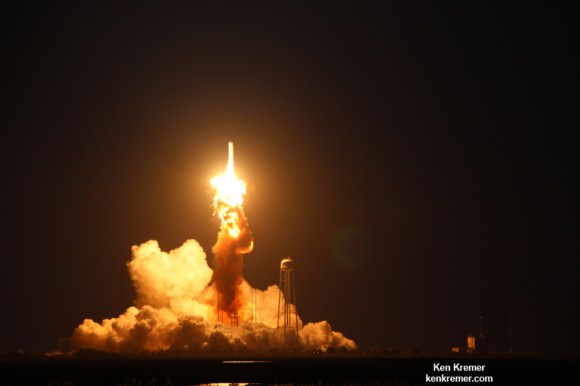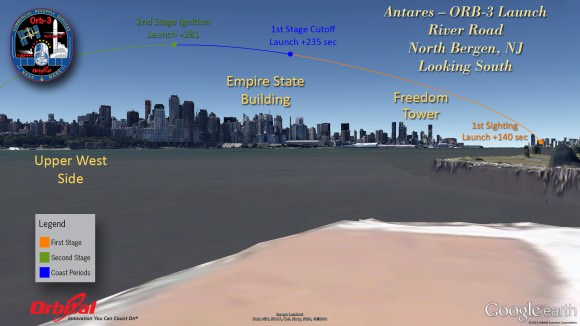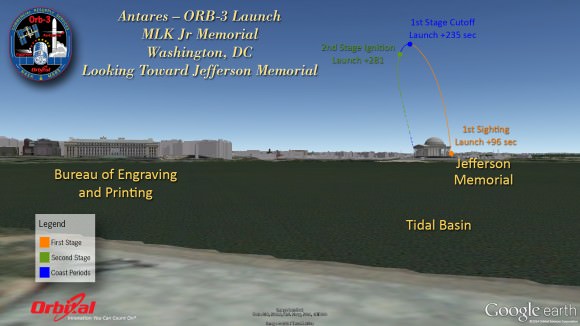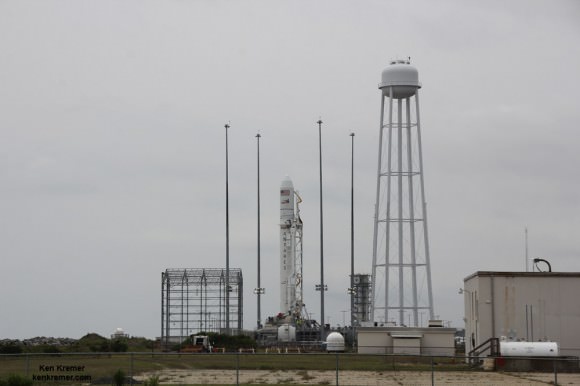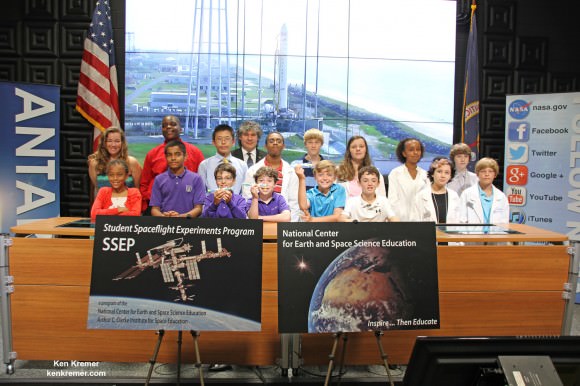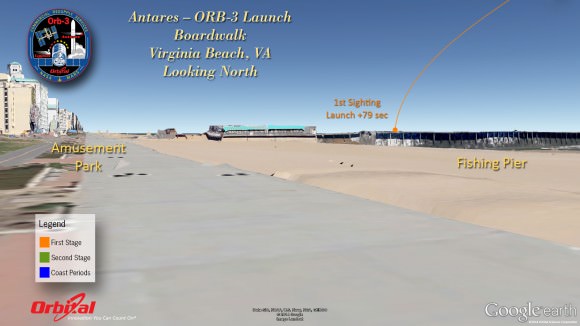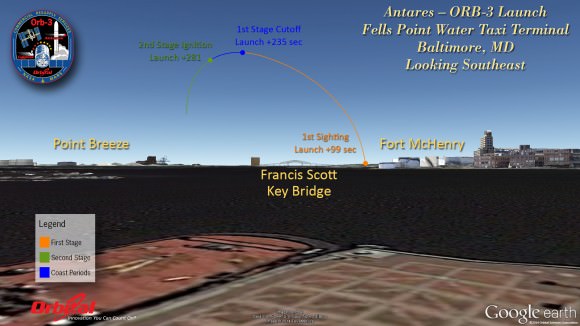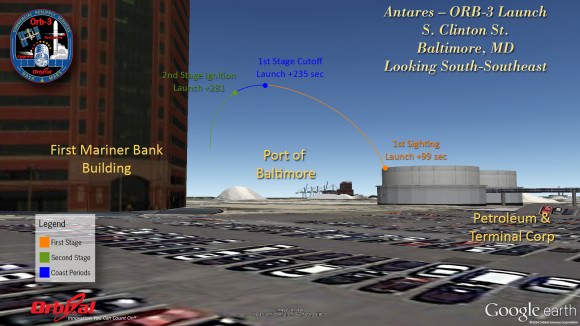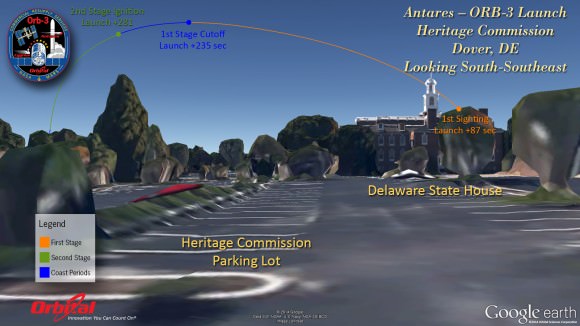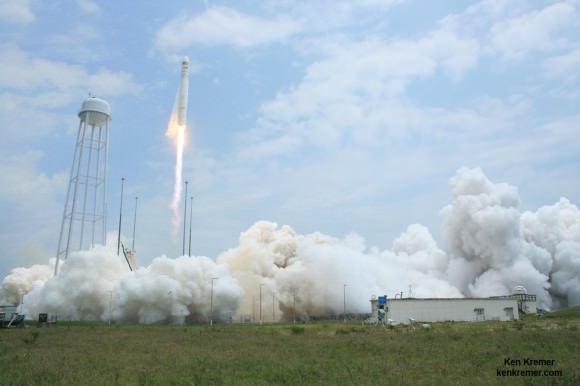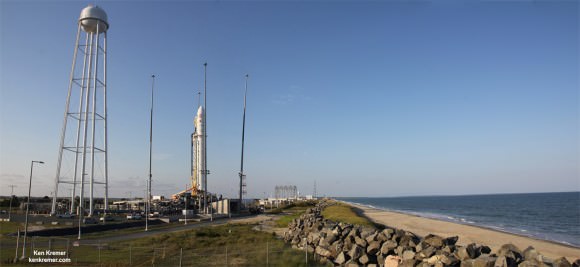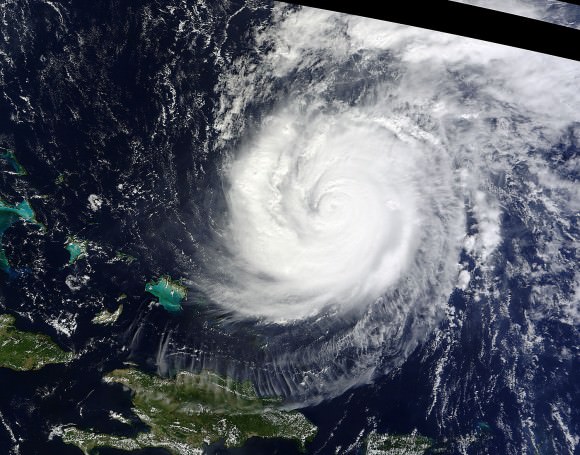In the wake of last weeks disastrous failure of the Orbital Sciences commercial Antares rocket seconds after blastoff from NASA’s Wallops Flight Facility, VA, on a critical resupply mission to the space station, Orbital’s Chairman announced a comprehensive way forward involving a two pronged strategy to quickly fulfill their cargo commitments to NASA as well as upgrade the rockets’ first stage propulsion system.
“Orbital announced comprehensive plans to fulfill its contract commitments under NASA’s Commercial Resupply Services (CRS) program as well as to accelerate an upgrade of the Antares medium-class launcher’s main propulsion system, the company said in a statement and discussion by David Thompson, Orbital’s Chairman and Chief Executive Officer, during an investors conference call.
“Orbital is taking decisive action to fulfill our commitments to NASA in support of safe and productive operations of the Space Station,” said Thompson.
“While last week’s Antares failure was very disappointing to all of us, the company is already implementing a contingency plan to overcome this setback. We intend to move forward safely but also expeditiously to put our CRS cargo program back on track and to accelerate the introduction of our upgraded Antares rocket.”
The Orbital Sciences privately developed Antares rocket was doomed by a sudden mid-air explosion some 15 seconds after liftoff from NASA’s Wallops Flight Facility, VA, at 6:22 p.m. EDT on Tuesday, October 28.
A turbopump failure in one of the rockets two Aerojet Rocketdyne AJ26 engines that power the first stage has been identified by Orbital’s Accident Investigation Board (AIB) as the probable cause of the huge explosion that destroyed the booster and its NASA payload in a raging fireball after liftoff.
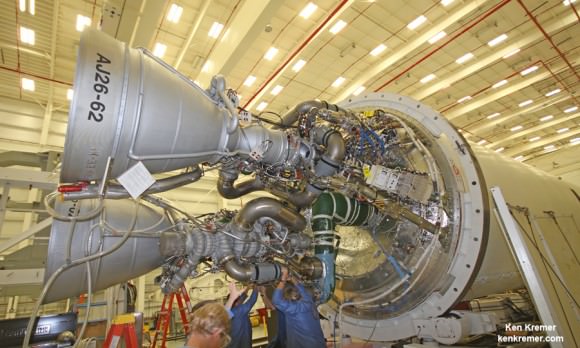
The AJ26 engines were originally manufactured some 40 years ago in the then Soviet Union as the NK-33. They were refurbished and “Americanized” by Aerojet Rocketdyne.
“While still preliminary and subject to change, current evidence strongly suggests that one of the two AJ26 main engines that powered Antares first stage failed about 15 seconds after ignition. At this time, we believe the failure likely originated in or directly affected the turbopump machinery of this engine, but I want to stress that more analysis will be required to confirm that this finding is correct,” said Thompson.
Overall this was the 5th Antares launch using the AJ26 engines.
AJ26 engine failure was immediately suspected, though by no means certain, based on an inspection of numerous photos and videos from myself and many others that clearly showed a violent explosion emanating from the base of the two stage rocket.
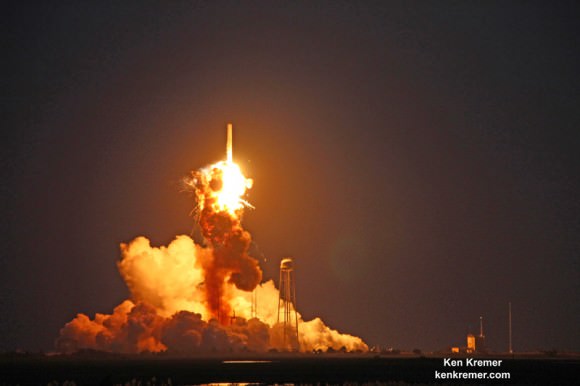
The remainder of the first stage and Antares entire upper stage was clearly intact at the moment of the explosion in all the imagery.
Thompson said Orbital is accelerating contingency planning and is looking at several alternate rocket suppliers in the US and Europe to launch Orbital’s Cygnus cargo freighter to the station.
Cygnus has functioned perfectly to date and was designed to launch on other vehicles.
“Orbital will employ the inherent flexibility of our Cygnus cargo spacecraft that permits it to be launched on third party launch vehicles and to accommodate heavier cargo loads as allowed by more capable launchers. This option had already been contemplated in previous contingency plans and product improvement roadmaps and its implementation should be relatively straightforward.”
Thompson furthermore stated that the company would need to launch one or two Cygnus spacecraft on alternate providers and hope to do so during 2015 so as to keep their CRS resupply commitments to NASA on track and with minimal delay.
The next Antares/Cygnus launch from Wallops had been scheduled for no earlier than April 2015.
The April launch had been scheduled to introduce the enhanced, longer Cygnus with the capability to carry a significantly heavier cargo load to the ISS.

By employing the enhanced Cygnus, Orbital hopes to fulfill its entire CRS contract cargo up mass commitment to NASA in four flights instead of five by the end of 2016.
“Taking advantage of the spacecraft’s flexibility, we will purchase one or two non-Antares launch vehicles for Cygnus flights in 2015 and possibly in early 2016 and combine them with several upgraded Antares rocket launches of additional Cygnus spacecraft in 2016 to deliver all remaining CRS cargo,” said Thompson.
“By consolidating the cargo of five previously-planned CRS missions into four more capable ones, we believe we can maintain a similar or perhaps even a somewhat better delivery schedule than we were on before last week’s launch failure, completing all current CRS program cargo deliveries by the end of 2016.”
The possible launch providers include a United Launch Alliance Atlas V, a SpaceX Falcon 9 or a rocket from the European Space Agency at the Guiana Space Center.
Orbital had previously announced and managers told Universe Today that the company already had decided on plans to integrate a new first stage engine in a new and upgraded second generation version of Antares.
But no one at Orbital will confirm the identity of the chosen first stage engines.
“We will accelerate the introduction of Antares’ upgraded propulsion system, advancing its initial launch date from the previously planned 2017 into 2016,” said Thompson.
Thompson also said the AJ26 engine are unlikely to be used again without complete assurances.
“Consequently, we will likely discontinue the use of the AJ26 rocket engines that had been used on the first five Antares vehicles unless and until those engines can be conclusively shown to be flight worthy,” Thompson stated.
See my exclusive photos herein showing the AJ26 engines with their original NK-33 stencil, during prelaunch processing and mating to the first stage inside Orbital’s Horizontal Integration Facility (HIF) at NASA Wallops.
The NK-33 was originally designed and manufactured in the 1960s by the Kuznetsov Design Bureau for the Soviet Union’s planned N1 rocket to propel cosmonauts to the moon during the space race with NASA’s hugely successful Apollo Moon Landing program.
The 14 story Antares rocket is a two stage vehicle.
The liquid fueled first stage is filled with about 550,000 pounds (250,000 kg) of Liquid Oxygen and Refined Petroleum (LOX/RP) and powered by a pair of AJ26 engines that generate a combined 734,000 pounds (3,265kN) of sea level thrust.
The Oct. 28 launch disaster was just the latest in a string of serious problems with the AJ-26/NK-33 engines.
Earlier this year an AJ26 engine failed and exploded during pre launch acceptance testing on a test stand on May 22, 2014 at NASA’s Stennis Space Center in Mississippi.
Besides completely destroying the AJ26 engine, the explosion during engine testing also severely damaged the Stennis test stand. It has taken months of hard work to rebuild and restore the test stand and place it back into service.
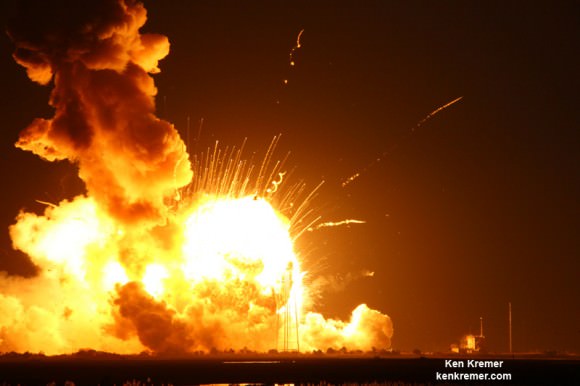
The doomed mission was bound for the International Space Station (ISS) on a flight to bring up some 5000 pounds of (2200 kg) of science experiments, research instruments, crew provisions, spare parts, spacewalk and computer equipment and gear on a critical resupply mission in the Cygnus resupply ship bound for the International Space Station (ISS).
The Orbital-3, or Orb-3, mission was to be the third of eight cargo resupply missions to the ISS through 2016 under the NASA Commercial Resupply Services (CRS) contract award valued at $1.9 Billion.
Orbital Sciences is under contract to deliver 20,000 kilograms of research experiments, crew provisions, spare parts and hardware for the eight ISS flights.
I was an eyewitness to the awful devastation suffered by the Orb-3 mission from the press viewing site at NASA Wallops located at a distance of about 1.8 miles away from the launch complex.
I was interviewed by NBC News and you can watch the entire story and see my Antares explosion photos featured at NBC Nightly News on Oct. 29 here.
Watch the Antares launch disaster unfold into a raging inferno in this dramatic sequence of my photos shot on site – here.
Check out my raw video of the launch – here.
Read my firsthand account of the disaster as viewed from the press site, with photos – here.
Watch my interview at Universe Today Weekly Space Hangout on Oct 31, 2014 -here.
Watch here for Ken’s onsite reporting direct from NASA Wallops.
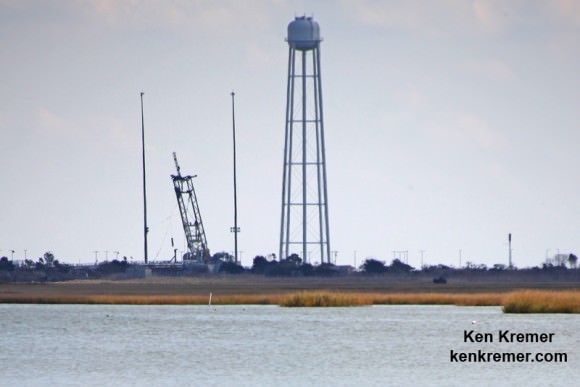
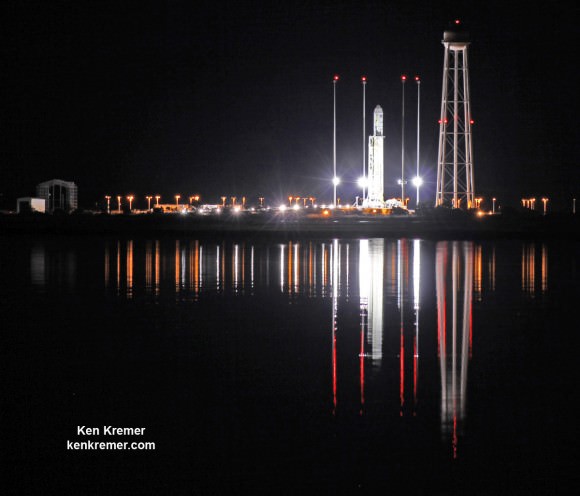
Stay tuned here for Ken’s continuing Earth and Planetary science and human spaceflight news.

